I’ve been baking with oat flour for years, testing it in cakes, cookies, quick breads, and even pie crusts, and in this guide, I’ll share everything you need to know to make it work. From easy substitution tips to my most-loved recipes, you’ll leave feeling confident and excited to start experimenting in your own kitchen. If you want to dive right in, you can browse all my oat flour recipes here.

What Is Oat Flour? Benefits, Flavor, and Why Bakers Love It
- Creates soft, tender bakes without feeling heavy.
- Adds a subtle, nutty flavor that pairs beautifully with desserts.
- Naturally gluten-friendly (choose certified gluten-free oats if needed).
- Compared to all-purpose flour, oat flour is less processed, higher in fiber and protein, offers better micronutrients, and has a lower glycemic impact — making desserts feel a little more nourishing, the kind of treats you feel great serving to the people you love.
What to Know Before Swapping Oat Flour for All-Purpose
Using 100% oat flour
You can bake with 100% oat flour — I do it all the time — but there isn’t one rule that works for every recipe. Oat flour behaves differently from all-purpose flour, so what works beautifully in a chewy cookie may need a tweak in a delicate cake. In most recipes, you’ll need about 1¼ to 1⅓ cups of oat flour for every cup of all-purpose flour.
I’ve found that adding a little cornstarch helps lighten the texture and creates a softer, more tender crumb. A good starting point is to use 1 cup of oat flour plus 2 tablespoons of oat flour and 2 tablespoons of cornstarch for every 1 cup of all-purpose flour you’re replacing. If you don’t have cornstarch, one of its baking substitutes will work here too.
The key is experimenting and adjusting. If your batter looks too dry at the end, add a splash of liquid. If it seems too wet, mix in a little more oat flour until the texture feels right.
The Best Cornstarch Substitutes for Oat Flour Baking
If you don’t have cornstarch, these swaps can give you a similar result when baking with oat flour. Just keep in mind that some are a straight 1:1 substitution, while others need adjusting.
- Arrowroot starch → Light and soft, almost identical to cornstarch. Best in cakes, muffins, and cookies, where you want tenderness. Use 1:1.
- Tapioca starch → Adds a bit more chew and elasticity. Great for brownies, chewy cookies, and fruit-filled bars. Use 2 tablespoons of tapioca for every 1 tablespoon of cornstarch.
- Potato starch → Creates a soft, moist crumb. Works well in cakes, quick breads, and muffins. Use 1:1.
How to Test Oat Flour in Old Recipes (Without Wasting Ingredients)
If you’re adapting a favorite recipe, start by replacing 30% of the all-purpose flour with oat flour and see how it turns out. If you like the results, you can increase the amount next time. For a full swap, a good baseline is about 1 cup plus 2 tablespoons oat flour plus 2 tablespoons cornstarch for every 1 cup of all-purpose flour.
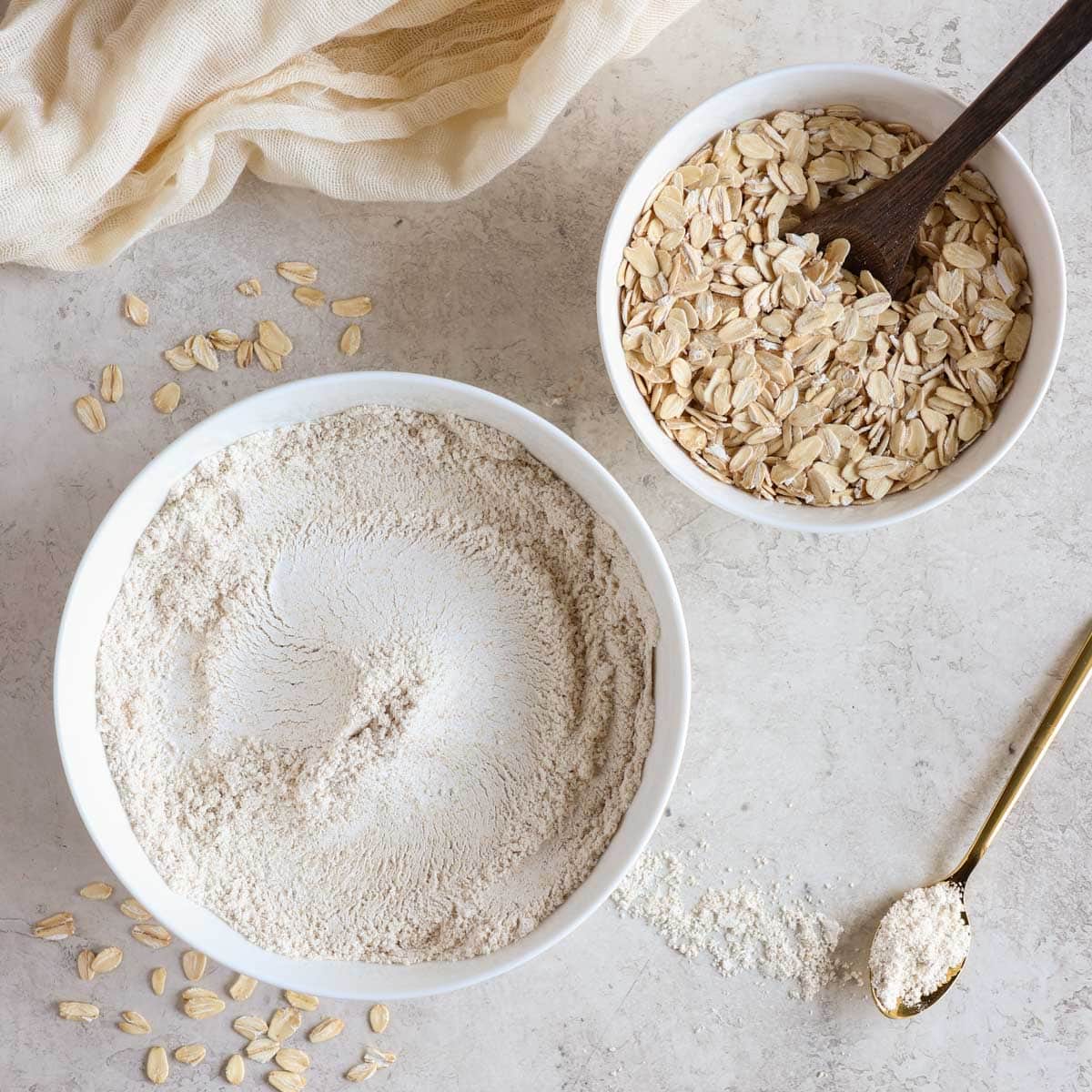
7 Must-Know Tips for Soft, Tender Bakes with Oat Flour
Tip 1: How to Make Oat Flour at Home in 1 Minute
You can buy oat flour at the store, but it’s just as easy (and usually cheaper) to make at home. Blend old-fashioned oats in a high-speed blender until they turn into a fine powder — usually 30 seconds to a minute.
Tip 2: The Right Way to Measure Oat Flour (Avoid This Common Mistake)
To measure oat flour accurately, use a dry measuring cup — not a liquid one. Start by giving the flour a quick “fluff” in the container to loosen it up. Then gently spoon it into the measuring cup until it’s slightly mounded. Use a straight edge, like the back of a knife, to sweep off the excess in one clean motion. Weigh your oat flour a few times to ensure accurate measurement. If you Google "how much does oat flour weigh," you will get a range of results. But if you measure it the way I explained, you should get around 98 to 100 grams.
Tip 3: Why Sifting Oat Flour Makes a Big Difference
Oat flour can clump, especially if it’s been sitting in the bag or pantry. And if you make your own, sometimes you will have a couple of oats that didn't get ground completely. Sifting creates a lighter, smoother texture and helps your cakes, cookies, and quick breads rise more evenly.
Tip 4: The Secret Step for Moist Oat Flour Muffins and Cakes
Oat flour absorbs liquid more slowly than all-purpose. Give your batter 5 to 10 minutes before baking so the flour can fully hydrate. It makes a noticeable difference in keeping cakes, muffins, and quick breads soft and moist.
Tip 5: How to Keep Oat Flour Bakes from Falling Apart (Binders That Work)
Since oat flour has no gluten, it sometimes needs a little extra help holding things together. Eggs work beautifully, but you can also use alternatives such as flax eggs, chia eggs, or aquafaba to give structure to your bakes. Here’s a clear guide on how to make a chia egg you can follow.
Tip 6: Adjust the leavening
Without gluten for structure, oat flour batters can turn out heavy. A little extra baking powder or baking soda gives them the boost they need to rise well and stay light.
Tip 7: The Best Way to Store Oat Flour So It Stays Fresh
Oat flour has more natural oils than all-purpose flour, so it can go rancid faster. Keep it in an airtight container in a cool, dry place. For longer shelf life, store it in the fridge or freezer. I keep my homemade oat flour in my pantry for up to six months.
📖 Recipe
How to Make Oat Flour
Equipment
- 1 high-speed blender
Ingredients
- 4 cups old-fashioned oats
Instructions
- Add oats to a high-speed blender or food processor.
- Blend on high for 30 to 60 seconds, until finely ground.
- Store your oat flour in an airtight container in a cool, dry place for up to six months.
Reader-Favorite Oat Flour Recipes to Try First
Once you get the hang of how oat flour works, it’s time to bake! These are my reader-favorite recipes — ones I come back to again and again. They’re the perfect place to start if you’re new to baking with oat flour.
Cakes and Cupcakes
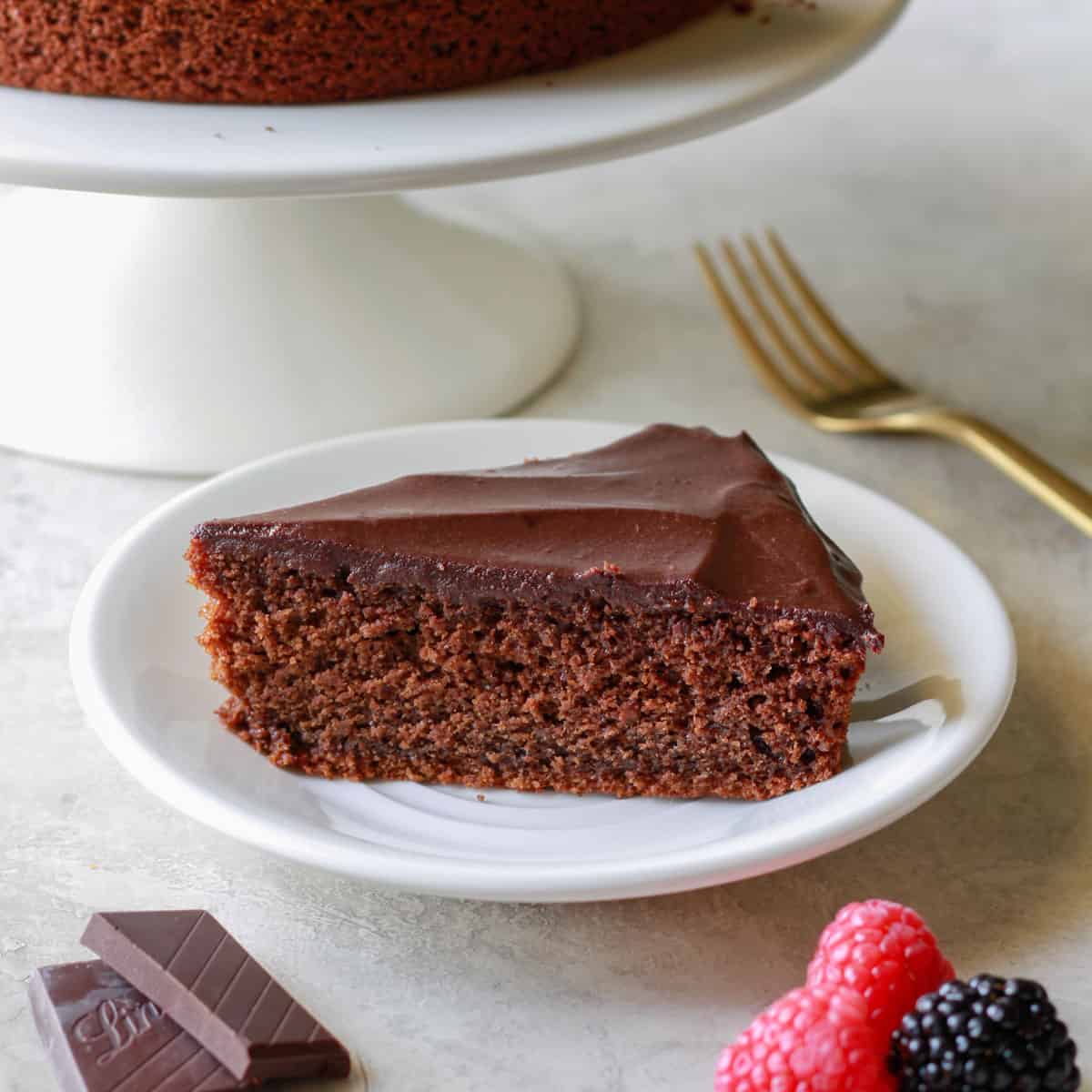
- Oat Flour Chocolate Cake – Rich, chocolatey, and perfectly moist. No one will believe it’s made with oat flour.
- Healthy Strawberry Cake (made with oat flour)– Light, bright, and bursting with fresh strawberry flavor. A fresh take on a classic.
- Protein Cupcakes – Soft, tender cupcakes made with oat flour and a protein boost — dessert and fuel all in one.
- Chocolate Protein Mug Cake- This chocolate protein mug cake is soft, fudgy, and cooks in just one minute.
Cookies, Brownies, and Bites
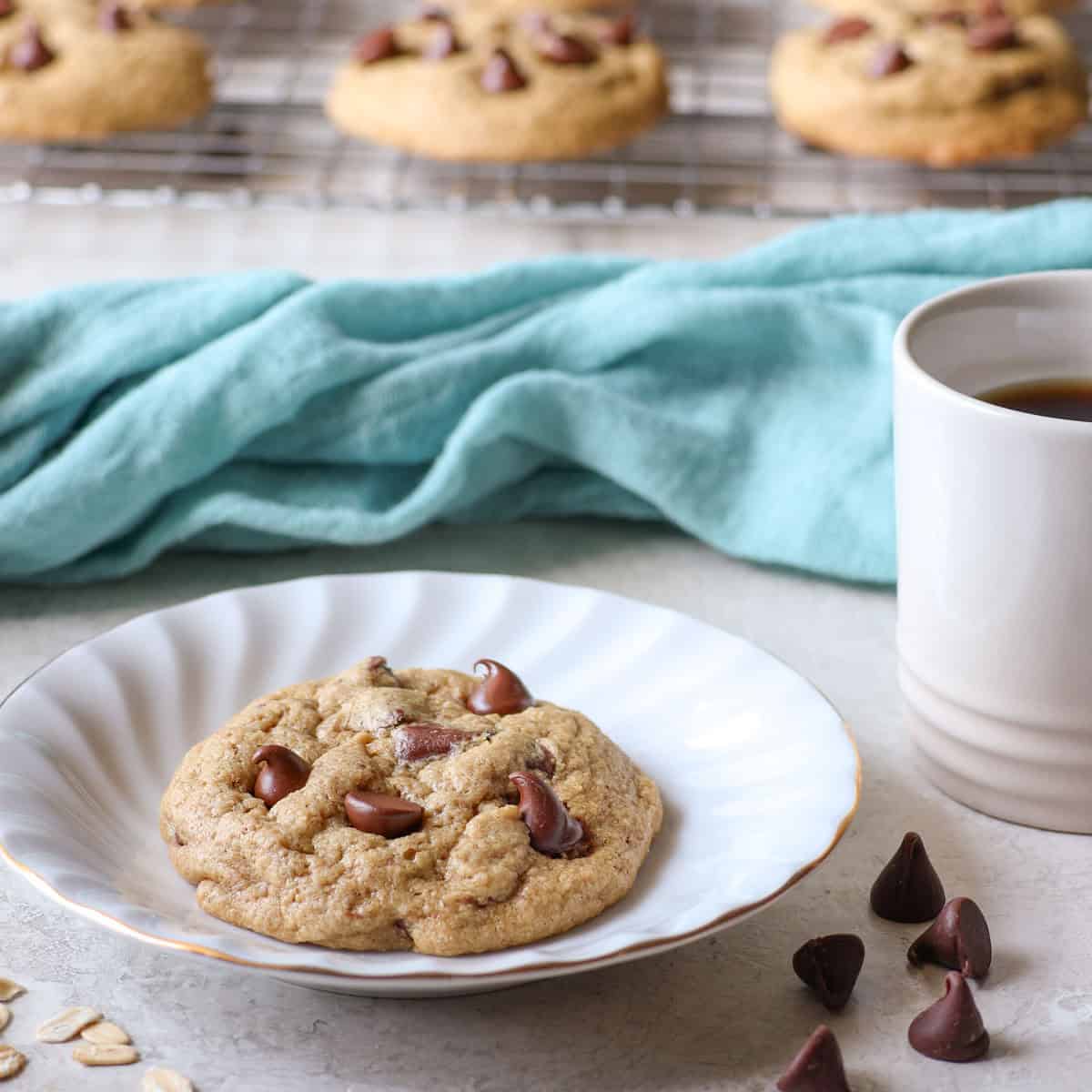
- Healthy Protein Brownies - super fudgy, rich, and packed with protein. Perfect for an on-the-go snack that still satisfies your chocolate cravings.
- Oat Flour Chocolate Chip Cookies – Soft, chewy, and packed with melty chocolate.
- Salted Honey Pumpkin Seed Bars – Sweet, salty, and a little unexpected in the best way. Made with oat flour, honey, and pumpkin seeds, these bars are so easy to make!
Muffins and Quick Breads
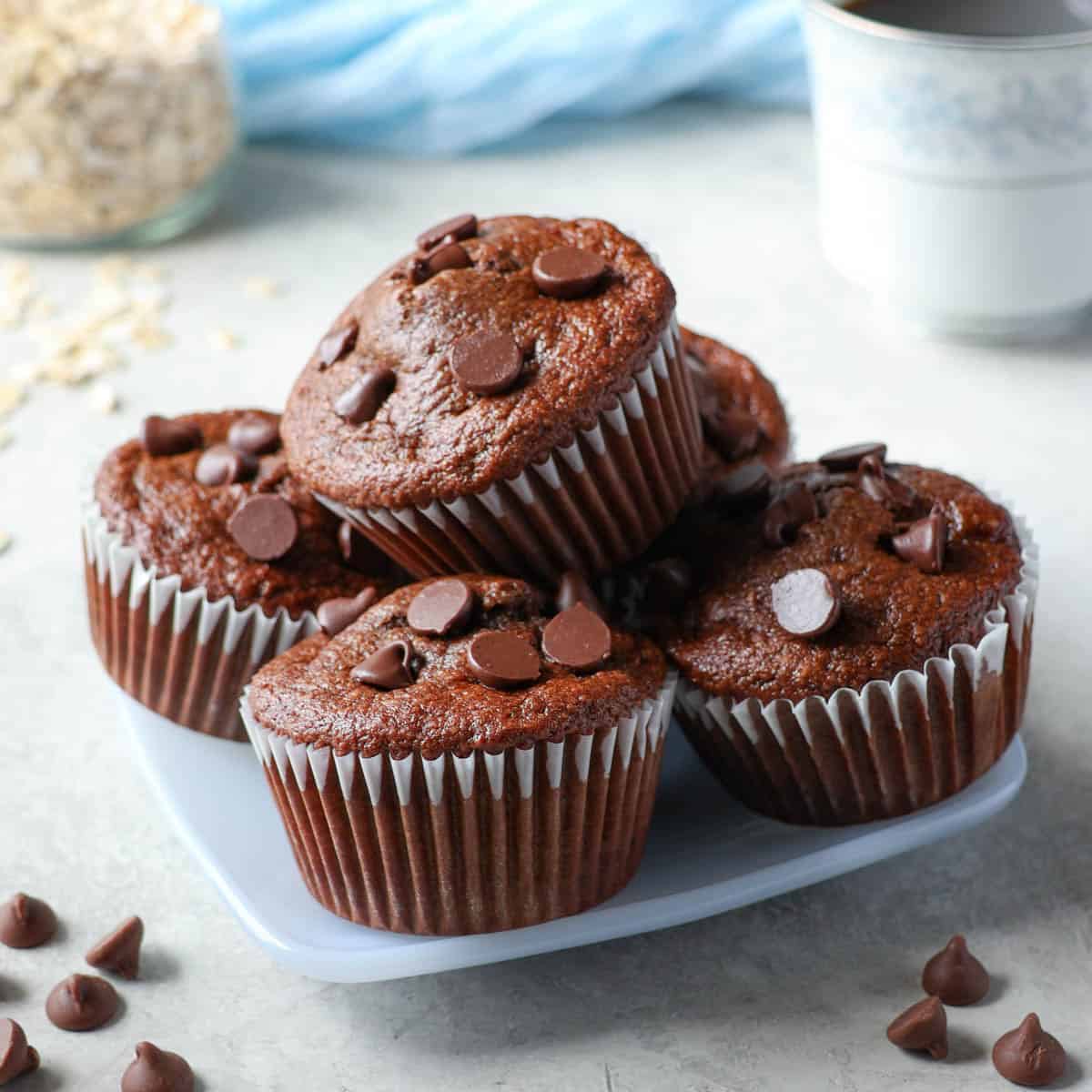
- Chocolate Banana Protein Muffins – Moist, chocolatey, and packed with protein for an easy grab-and-go snack.
- Blender Banana Bread – A moist, delicious, and healthy banana bread that's made in a blender. This is the easiest banana bread you'll ever make!
Want even more oat flour inspiration?
Check out my complete collection of oat flour recipes for cookies, cakes, breads, and more.
Easy Oat Flour Dog Treat Recipes
Oat flour isn’t just for people — it’s perfect for homemade dog treats too! These recipes are simple, wholesome, and pup-approved:
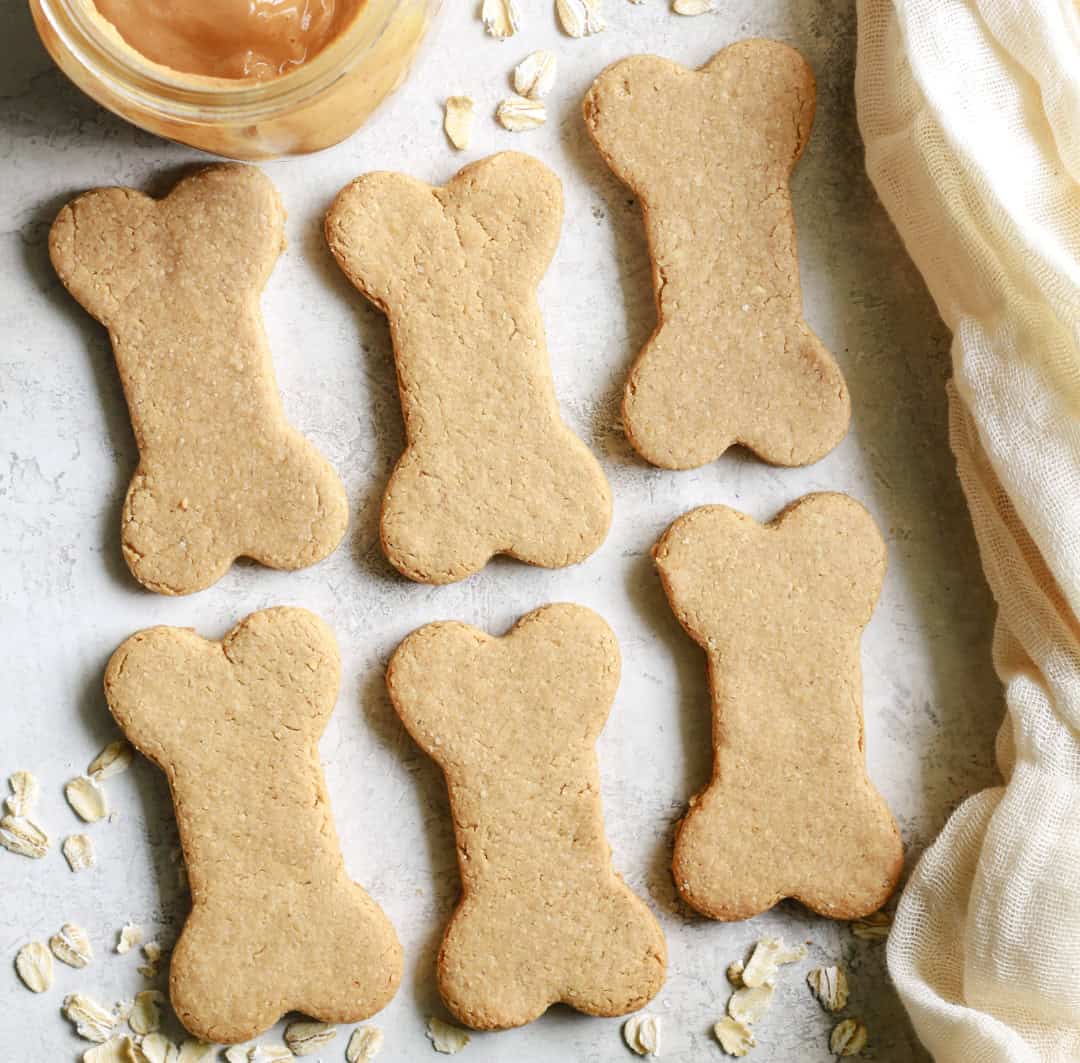
- Peanut Butter Oat Dog Treats – You won't believe how easy these treats are to make, and you only need three ingredients. So much better than store-bought!
- Dog Pumpkin Pie with Oat Flour Crust – A fun, seasonal treat for your pup with a flaky oat flour crust and creamy pumpkin filling.
Oat Flour FAQs: Gluten-Free, Storage, and More
Naturally, yes. But always choose certified gluten-free oats if you’re baking for someone with celiac disease or a gluten sensitivity. Regular oats are often processed in facilities that handle wheat, so cross-contamination is common.
Absolutely! Oat flour makes a light, tender, and slightly nutty pie crust that pairs perfectly with sweet or savory fillings. My Healthy Oat Flour Pie Crust recipe uses simple ingredients and comes together quickly — no rolling required. It’s perfect for pumpkin pies, quiches, or fruit tarts.
Yes! Oat flour freezes really well, and it’s a great way to extend its shelf life. Just transfer it to an airtight container or a zip-top freezer bag, squeeze out any extra air, and freeze for up to 6 months. When you’re ready to use it, let it come to room temperature before baking. This helps prevent clumping and keeps your batters smooth.
Baking with oat flour opens up so many possibilities — from soft cookies to tender cakes and chewy brownies. Once you get the hang of it, you’ll wonder why you didn’t start sooner.
If you’re ready to keep experimenting, take a peek at all my oat flour recipes and find your next bake.
Lightly yours,
Crystal at Dessert Done Light

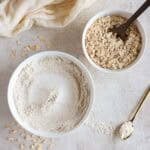
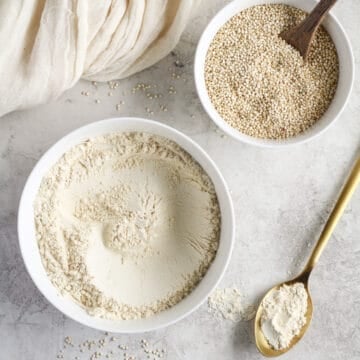
Crystal Yentzen says
Super easy!!
Carol says
Helpful tip with the baking soda!